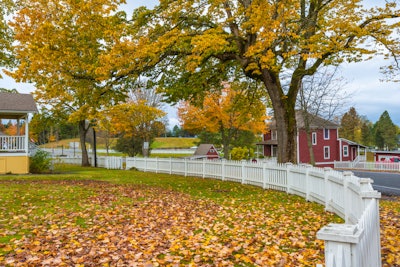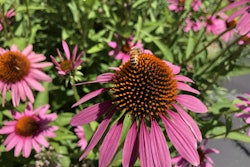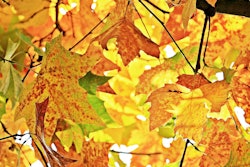
If you’ve noticed your customer’s landscape needing a few tree additions or your customers have been requesting more trees in their yard, take advantage of the coming few months of fall to put these additions into action.
Why the fall?
When looking at all the different services that need to be performed and plants that need planting during this season, the question customers sometimes ask is, “What’s so special about the fall?”
“One of the most common misconceptions of fall planting is that it is too cold to plant in the late fall,” the Arbor Day Foundation says online. “In reality, fall planting is preferred in many areas because it gives seedlings more time to establish their root systems and acclimate to the warm weather in the spring and summer.”
When trees are planted in the fall, they are given an extra growing season before the summer, which will inevitably come with the potential of heat stress. Combining the occasional fall rains and the cooler temperatures of the season, fall will give trees the opportunity to establish their roots, which will make it easier for them, later on, to adjust to possible summer drought and extreme heat.
When bringing up the subject of planting young trees in the months leading up to winter, your customers might be hesitant, as they might be concerned for the safety of the trees, but thankfully, that’s not something they’ll need to worry about.
When winter arrives, trees will go dormant, which will slow down the tree’s growth, metabolism, and energy consumption. Until the ground is frozen solid, you are in the clear to plant trees, and you can even plant them if there’s snow on the ground.
“Although it is cold outside, trees can be planted until the ground is frozen solid,” the Arbor Day Foundation says online. “If you’re able to stick a spade in the ground, you’re still able to plant your trees. Because trees go dormant in the winter, they require little to no care.”
Picking the place
Before planting the trees, be sure to properly and thoroughly evaluate the space to make sure it will be able to meet the needs of the trees while they are growing.
Avoid planting the trees too close to any surrounding structures, and also take into consideration how much moisture, sunlight and shade the trees will be able to receive in the chosen area.
“Make sure the site you pick to plant the tree will accommodate the tree after it has matured,” the University of Vermont Extension Department of Plant and Soil Science says online. “If planting close to your (customer’s) house, choose a smaller or slower-growing tree, unless, of course, you are trying to block out an undesirable view.”
Before planting, the University of Vermont Extension recommends testing the drainage of the soil, as well as making sure the pH of the soil is right. It’s possible that the soil might need to be amended before you plant the trees, and this can usually be done by adding in lime or phosphorous.
Also, keep in mind that it’s always a good idea to call 811 before you begin digging to ensure the trees won’t be planted on underground utility lines.
Once you’ve chosen a site, dig the hole two to three times wider than and about as deep as the rootball of the tree.
“The hole should be deep enough to plant the tree at the same depth, or slightly above the depth, it was in the nursery field,” the University of Vermont Extension Department of Plant and Soil Science says online. “If you dig the hole too deep, the tree will settle as you water it. This places stress on the root system.”
Afterward
Once the trees are securely in the ground, be sure to add in a two- to three-inch ring of mulch around the base, but do not pile it against the tree and create a mulch volcano.
“Be sure to mulch and water your tree after planting,” the Arbor Day Foundation says online. “Mulch is important to retaining moisture. But it’s also important in the fall to prevent the possibility of freezing and thawing that can lead to frost heaving.”
Even if it’s cold outside, be sure to water the trees. Depending on the type of tree, the size, and your location, the amount of water needed throughout the fall will vary, so be sure to research before planting and keep your customer fully informed.
If your customers inquire about planting their trees in pots instead of out in the yard due to the fear of what the winter weather will do to the young trees, advise them against it for the betterment of the tree.
“Many people opt to plant in pots when they can’t plant their trees right away,” the Arbor Day Foundation says online. “However, we don’t encourage planting in a pot as there are many dangers that come with that. The changing temperatures can freeze the soil in the pot and lead to it cracking. There also isn’t enough aeration. Trees need water and oxygen to thrive, because of a pot’s constricted space, the tree will get little oxygen.”












